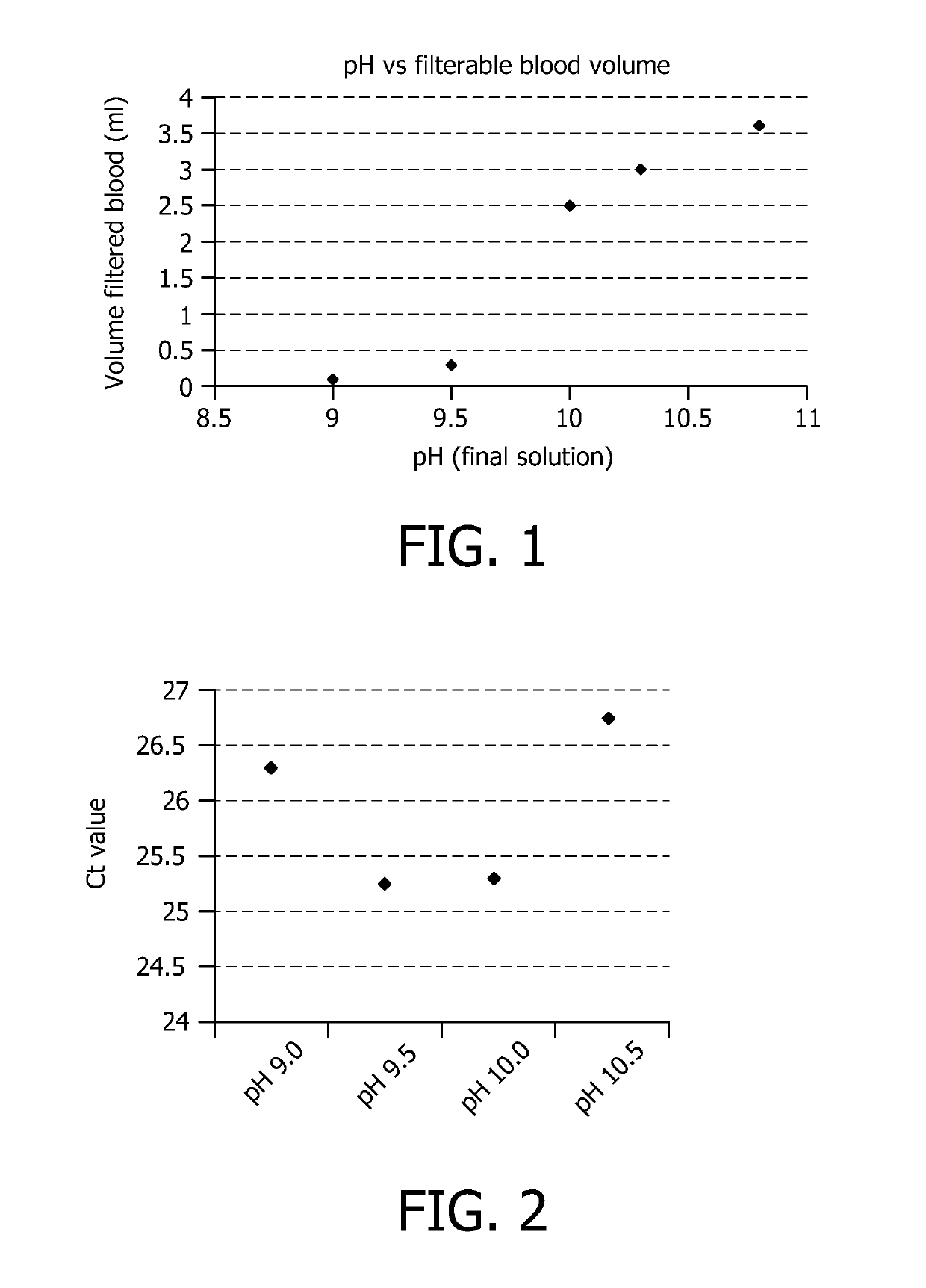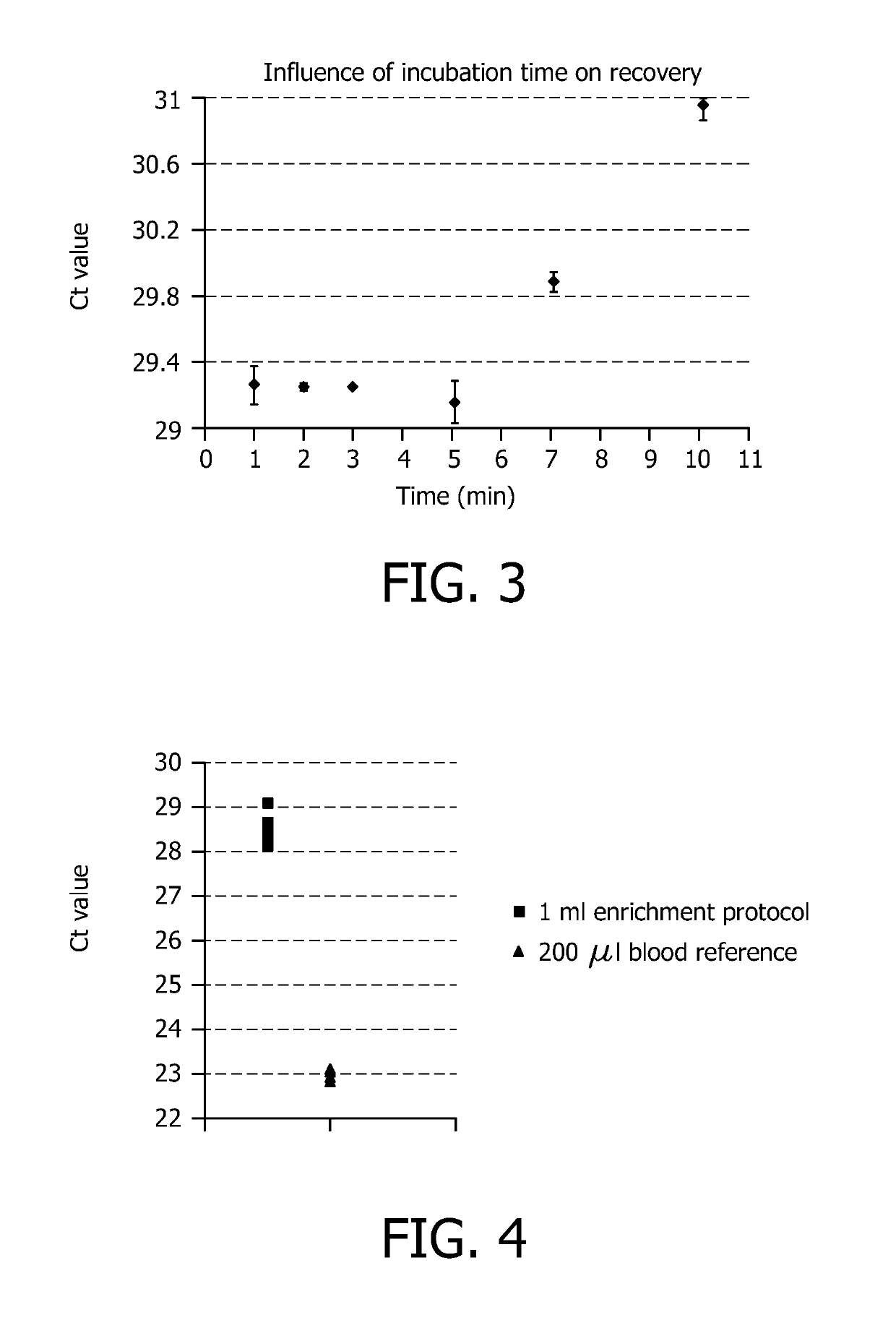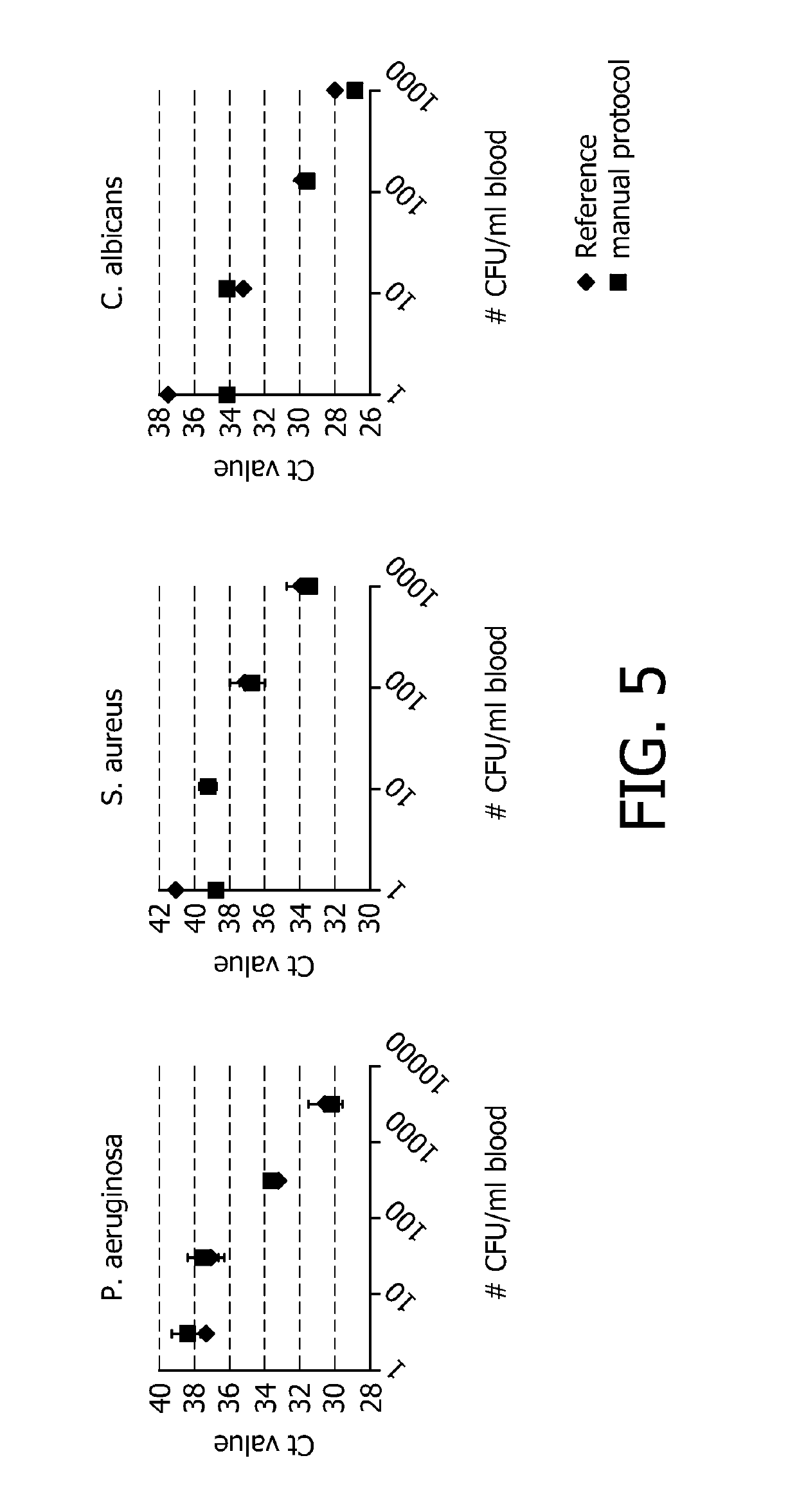Selective lysis of cells
a lysis and eukaryotic technology, applied in the field of eukaryotic cell lysis, can solve the problems of large volume of blood, difficult to detect in a volume of 10 ml of whole blood the presence of about, and complicate the direct detection of pathogens in samples, etc., and achieve the effect of low viscosity and less complex
- Summary
- Abstract
- Description
- Claims
- Application Information
AI Technical Summary
Benefits of technology
Problems solved by technology
Method used
Image
Examples
example 1
[0069]Effect of pH on Filtration
[0070]The goal of this experiment is to assess the effect of pH of the buffer on filtration efficiency. The buffer capacity was sufficient to obtain a similar pH in the final solution as confirmed by measuring the pH of the final solution using conventional techniques known to the person skilled in the art.
[0071]The buffers contained:
[0072]1M NaBorate, pH 9.0+1% Triton X-100[0073]1M NaBorate, pH 9.5+1% Triton X-100[0074]1M NaCarbonate, pH 10.0+1% Triton X-100[0075]1M NaCarbonate, pH 10.3+1% Triton X-100[0076]1M NaCarbonate, pH 10.8+1% Triton X-100
[0077]1 ml of buffer was mixed with 1 ml full blood and incubated for 3 minutes. Hereafter, the neutralization buffer was added and the mixture was filtered through a size selection filter of 25 mm in diameter and with a pore size of 0.45 μm using a vacuum filtration set-up. The volume of blood that was able to pass the filter before it clogged was measured. Results are shown in FIG. 1. This experiment demons...
example 2
[0078]The effect of pH of the buffer on the recovery of intact pathogens (E. coli) after selective lysis of the blood cells is shown.
[0079]Used buffers contained:[0080]1M NaBorate, pH 9.0+1% Triton X-100[0081]1M NaBorate, pH 9.5+1% Triton X-100[0082]1M NaCarbonate, pH 10.0+1% Triton X-100[0083]1M NaCarbonate, pH 10.5+1% Triton X-100
[0084]Identical amounts of bacteria are spiked into 1 ml blood. This volume is treated with the above-mentioned buffers for 3 min. Hereafter the blood is centrifuged (10 min, 4000 g) to collect the intact bacteria. Bacteria are lysed using a standard alkaline lysis method and the DNA is purified using Qiagen spin columns (QiaAmp blood mini kit). The amount of DNA is quantified using real-time PCR. The result is shown in FIG. 2.
[0085]The abovementioned figure shows the recovery of the bacteria as a function of the pH of the selective lysis buffer. At low pH values, the white blood cell DNA is not degraded and is inhibiting the PCR reaction. At high pH valu...
example 3
[0086]Influence of incubation time on recovery of pathogens.
[0087]This example demonstrates the influence of prolonged incubation of blood with the selective lysis buffer according to the invention on the recovery of intact pathogens. A fixed number of P. aeruginosa bacteria was spiked into blood. 1 ml of spiked blood was mixed with 1 ml selective lysis buffer (1M NaCarbonate pH 10.0+1% Triton X-100) and incubated for 1, 2, 3, 5, 7 or 10 minutes. Hereafter, 1 ml of neutralization buffer was added. The pathogens were collected by centrifugation (10 min at 4000 g) and the bacterial pellet was washed. Finally, the cells were lysed by standard alkaline lysis followed by DNA purification using the QiaAmp blood mini kit. The amount of recovered DNA was measured by real-time PCR. Results are visualized in FIG. 3 and indicate that incubation preferably is performed between 30 seconds and 10 minutes.
PUM
| Property | Measurement | Unit |
|---|---|---|
| volume | aaaaa | aaaaa |
| volume | aaaaa | aaaaa |
| time period | aaaaa | aaaaa |
Abstract
Description
Claims
Application Information
 Login to View More
Login to View More - R&D
- Intellectual Property
- Life Sciences
- Materials
- Tech Scout
- Unparalleled Data Quality
- Higher Quality Content
- 60% Fewer Hallucinations
Browse by: Latest US Patents, China's latest patents, Technical Efficacy Thesaurus, Application Domain, Technology Topic, Popular Technical Reports.
© 2025 PatSnap. All rights reserved.Legal|Privacy policy|Modern Slavery Act Transparency Statement|Sitemap|About US| Contact US: help@patsnap.com



